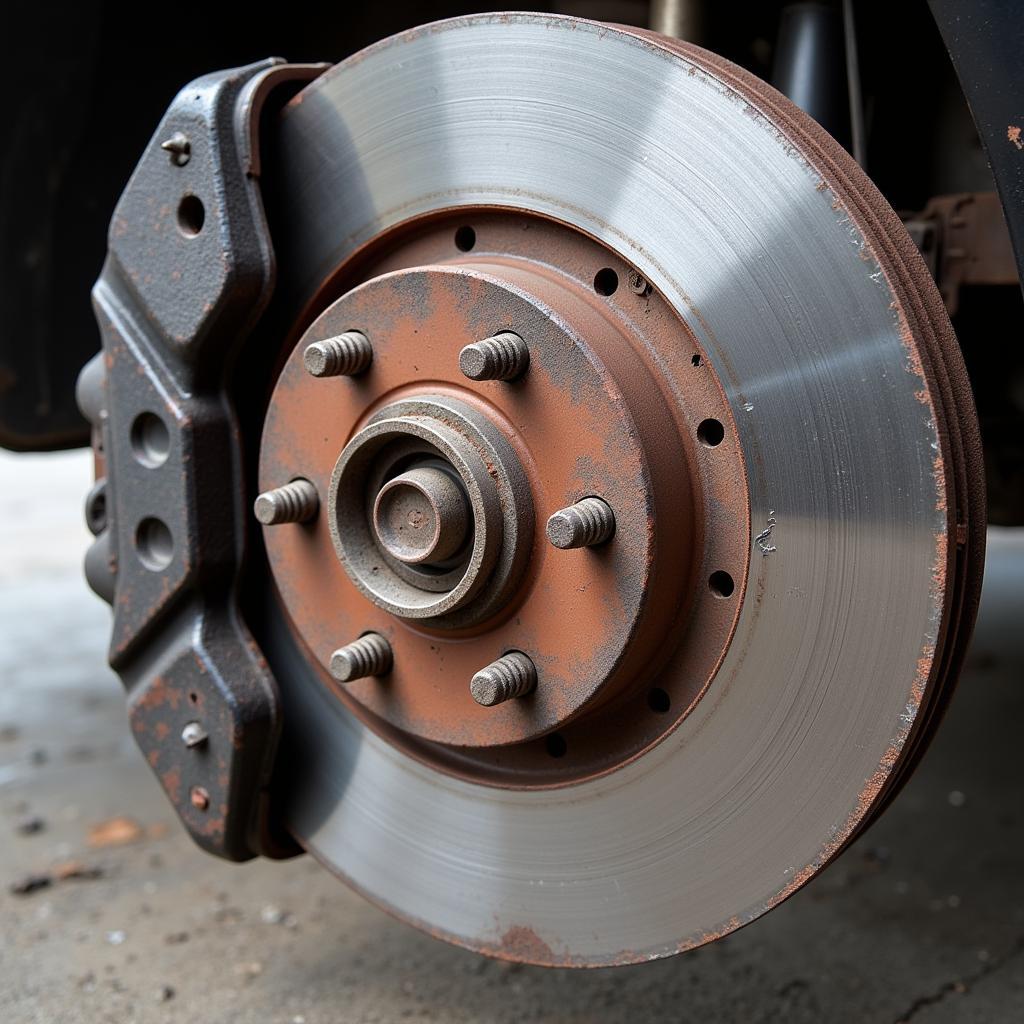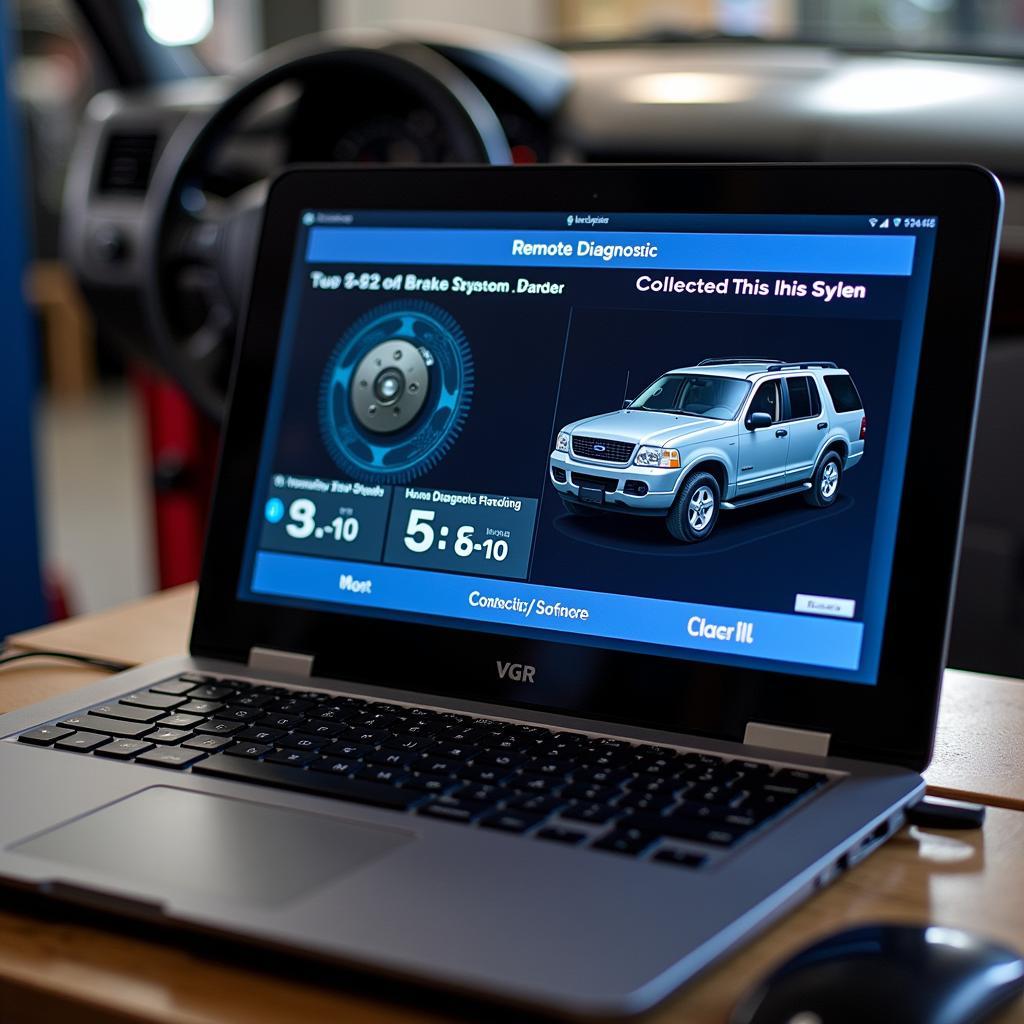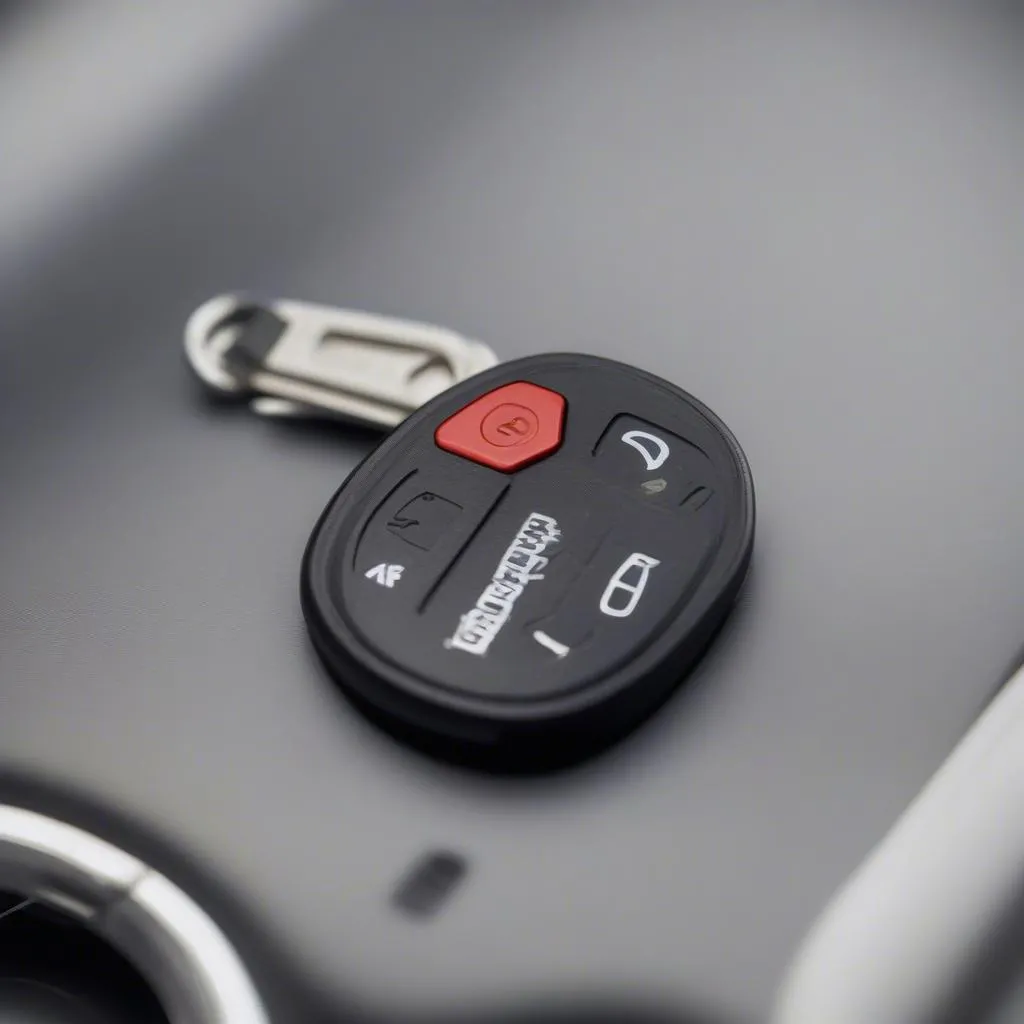The dreaded brake warning light on your 2004 Ford Explorer can be a real headache. It signals a potential problem with your braking system, demanding immediate attention. This article will guide you through the common causes of a 2004 Ford Explorer brake warning light, from simple fixes to more complex issues, empowering you to diagnose and potentially resolve the problem.
Understanding Your 2004 Ford Explorer’s Brake System
Before diving into troubleshooting, it’s helpful to understand the basics of your Explorer’s braking system. It’s a complex interplay of hydraulics, electronics, and mechanical components. Key elements include the master cylinder, brake lines, calipers, rotors, drums, and brake pads/shoes. The brake warning light itself is triggered by several sensors that monitor critical aspects of the system, like brake fluid level and brake pad wear.
Common Causes of the Brake Warning Light
Several factors can illuminate the brake warning light in your 2004 Ford Explorer. Let’s explore some of the most frequent culprits.
Low Brake Fluid
One of the most common and easily fixable causes is low brake fluid. Brake fluid is essential for transmitting the force from your foot to the brakes. Over time, brake pads wear down, requiring more fluid to engage the brakes fully. If the fluid level drops too low, the warning light comes on.
Worn Brake Pads
Brake pads are designed to wear down over time. As they thin, the sensor embedded within the pad will contact the rotor, triggering the warning light. Ignoring this warning can lead to further damage to your braking system and compromise your safety.
Faulty Brake Light Switch
Sometimes, the brake warning light can illuminate due to a faulty brake light switch. This switch activates the brake lights when you press the pedal and can also trigger the warning light if malfunctioning.
ABS Issues
Your 2004 Ford Explorer is equipped with an Anti-lock Braking System (ABS). This system prevents wheel lockup during hard braking. If the ABS module detects a problem, it can trigger the brake warning light.
Troubleshooting Your 2004 Ford Explorer Brake Warning Light
Here’s a step-by-step guide to help you troubleshoot the brake warning light:
-
Check the brake fluid level: Open the hood and locate the brake fluid reservoir. Ensure the fluid level is between the minimum and maximum lines. If it’s low, add brake fluid of the correct type specified in your owner’s manual.
-
Inspect the brake pads: Visually check the brake pads through the wheel spokes. If they appear thin or worn, it’s time for a replacement.
-
Test the brake lights: Have someone press the brake pedal while you check if all brake lights are functioning correctly. If not, the brake light switch may be faulty.
-
Check for ABS codes: If you suspect an ABS issue, you can use an OBD-II scanner to retrieve any stored diagnostic codes. These codes can pinpoint the specific problem within the ABS system.
 Worn Brake Pads on a 2004 Ford Explorer
Worn Brake Pads on a 2004 Ford Explorer
When to Seek Professional Help
While some brake warning light issues can be addressed with basic DIY skills, more complex problems often require professional attention. If you’re uncomfortable working on your vehicle’s braking system or if the problem persists after basic troubleshooting, take your Explorer to a qualified mechanic for diagnosis and repair. Remember, your brakes are critical for safety; it’s always better to err on the side of caution.
“Addressing brake issues promptly is crucial for safety,” says John Miller, ASE Certified Master Technician. “Ignoring a brake warning light can lead to more serious and expensive problems down the line.”
Remote Diagnostics and Software Solutions
In some cases, advanced diagnostic software can be utilized remotely to pinpoint the cause of the brake warning light. This can be particularly helpful in identifying intermittent issues or problems with the electronic components of the braking system. Some software solutions even allow for remote programming and recalibration of certain modules, potentially resolving the issue without a physical visit to a mechanic.
 Remote Diagnostics of 2004 Ford Explorer Brake System
Remote Diagnostics of 2004 Ford Explorer Brake System
Conclusion
The 2004 Ford Explorer brake warning light serves as a crucial indicator of potential problems within your braking system. By understanding the common causes and following the troubleshooting steps outlined in this article, you can take the first steps towards resolving the issue. Remember, prioritizing brake maintenance is essential for your safety and the safety of others on the road. If you’re unsure about any aspect of brake repair, always seek professional assistance.
FAQ
-
What should I do if my brake warning light comes on while driving? Pull over safely and check your brake fluid level. If it’s significantly low, do not continue driving. Call for roadside assistance.
-
How often should I replace my brake pads? Brake pad lifespan varies depending on driving habits and conditions. It’s best to have them inspected regularly, typically every 12,000 to 15,000 miles.
-
Can I drive with the brake warning light on? It’s strongly discouraged. The light indicates a potential safety concern. Have the problem diagnosed and repaired as soon as possible.
-
How much does it cost to replace brake pads? The cost varies depending on the type of brake pads and labor rates. Expect to pay between $150 and $300 per axle.
-
What is the difference between the brake warning light and the ABS light? The brake warning light indicates a general braking system issue, while the ABS light specifically signals a problem with the Anti-lock Braking System.
-
Can I top off my brake fluid myself? Yes, but ensure you use the correct type of brake fluid specified in your owner’s manual.
-
What does a spongy brake pedal mean? A spongy brake pedal can indicate air in the brake lines, a faulty master cylinder, or other brake system problems. Consult a mechanic immediately.

